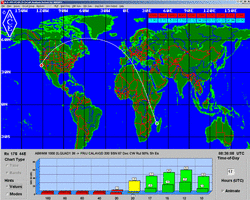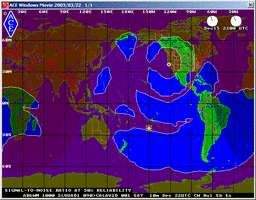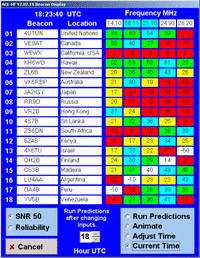My question is, when is a reliable time and freq to get *PSK, Contestia/Olivia/RTTM traffic in Metrowest Massachusetts.
I've gone by the various calling frequency lists (internal to software and external) and literally no soup.
Any thoughts would be helpful.
73, kc1mnc
I've gone by the various calling frequency lists (internal to software and external) and literally no soup.
Any thoughts would be helpful.
73, kc1mnc
I've had perfectly fine luck with ft8 using wsjt-x and wspr, and I think I once caught an RTTY FSK in the wild. ALso, JT65. And, of course, CW decoding is fine.
However, I've been looking for the last almost month for Contestia/Olivia/RTTM, or B/QPSK, using both mutipsk (which I bought because I like to support smaller creators) and hrd (which I would buy if I could get it to work). I've definitely heard a handful of digital signals that I couldn't figure out how to decode (even comparing them in the signal identification wiki) - (I think they might be pactor IV?, which I can't decode). And I've heard a few things that sound like Contestia/Olivia is supposed to sound, but no dice.
I've gone through various advice about how to use digital modes - I've got a 7300, DXCommander, Multipsk and WSJT-X running simultaneously, AT200ProII tuner, 80m ocf dipole but only about 20' up.
I've usually turned AGC off, attenuated, rgs, or preamp as needed, turned off IP+, AGC to off, Notch, NR, NF, filter1 wide, usually used the data mode (even though multipsk insists on switching back). I know signal is getting through to the thing, it's coming up reasonably on the waterfall.
I've switched all kinds of settings for the *PSK modes, reverse and no reverse, lsb and usb, with and without IP+, various modes and offsets/bandwidth, AGC, and some other settings, just to see if anything would trip it. I've poked all over the bands approximately where people say the calling stations are, at high traffic time. I've used websdr.org to find signals and have been able to see various data mode signals that it also picks up.
So, I'm kind of out of ideas -the next planned event is I intend to put up an MFJ-1777, maybe 50' up over the chimney, but I don't immediately think that's my problem. I've also tried SDRs, no dice.
However, I've been looking for the last almost month for Contestia/Olivia/RTTM, or B/QPSK, using both mutipsk (which I bought because I like to support smaller creators) and hrd (which I would buy if I could get it to work). I've definitely heard a handful of digital signals that I couldn't figure out how to decode (even comparing them in the signal identification wiki) - (I think they might be pactor IV?, which I can't decode). And I've heard a few things that sound like Contestia/Olivia is supposed to sound, but no dice.
I've gone through various advice about how to use digital modes - I've got a 7300, DXCommander, Multipsk and WSJT-X running simultaneously, AT200ProII tuner, 80m ocf dipole but only about 20' up.
I've usually turned AGC off, attenuated, rgs, or preamp as needed, turned off IP+, AGC to off, Notch, NR, NF, filter1 wide, usually used the data mode (even though multipsk insists on switching back). I know signal is getting through to the thing, it's coming up reasonably on the waterfall.
I've switched all kinds of settings for the *PSK modes, reverse and no reverse, lsb and usb, with and without IP+, various modes and offsets/bandwidth, AGC, and some other settings, just to see if anything would trip it. I've poked all over the bands approximately where people say the calling stations are, at high traffic time. I've used websdr.org to find signals and have been able to see various data mode signals that it also picks up.
So, I'm kind of out of ideas -the next planned event is I intend to put up an MFJ-1777, maybe 50' up over the chimney, but I don't immediately think that's my problem. I've also tried SDRs, no dice.



